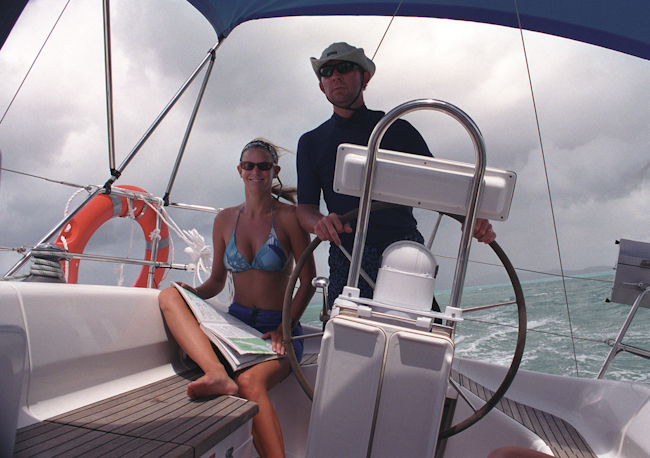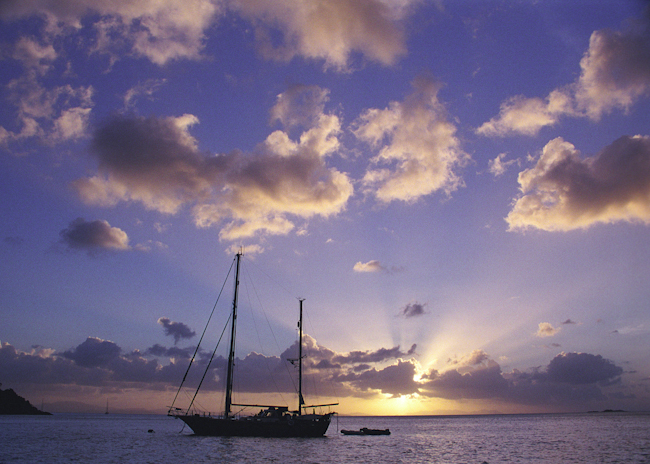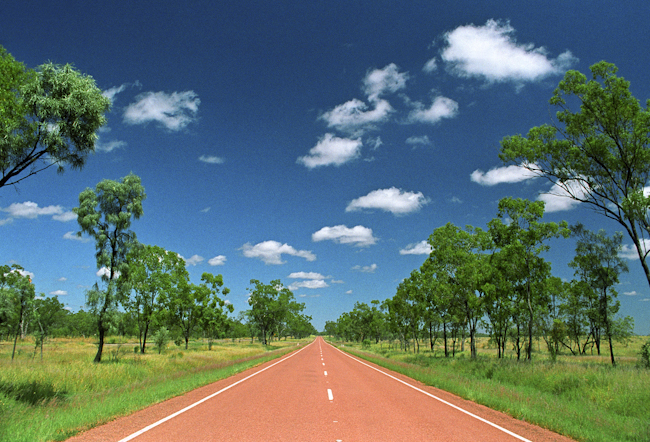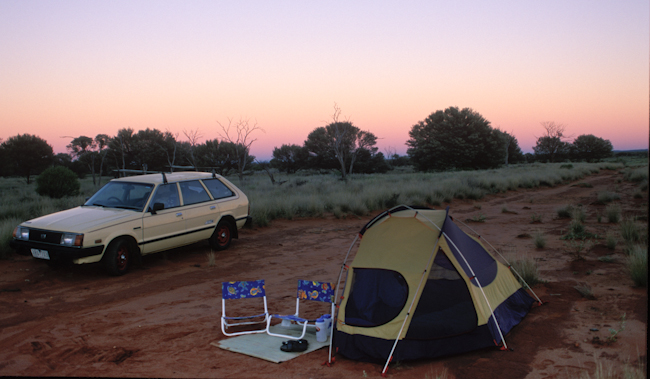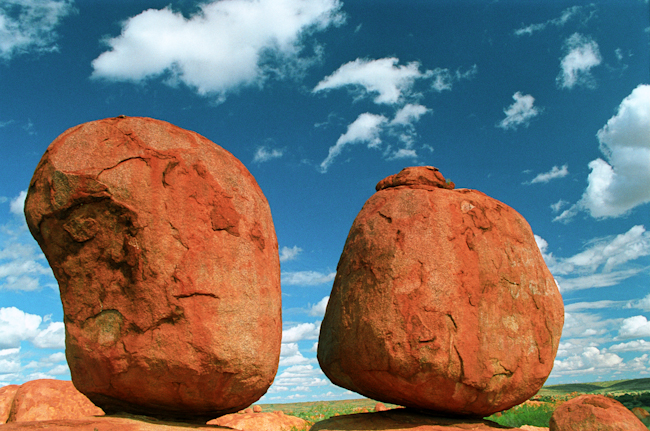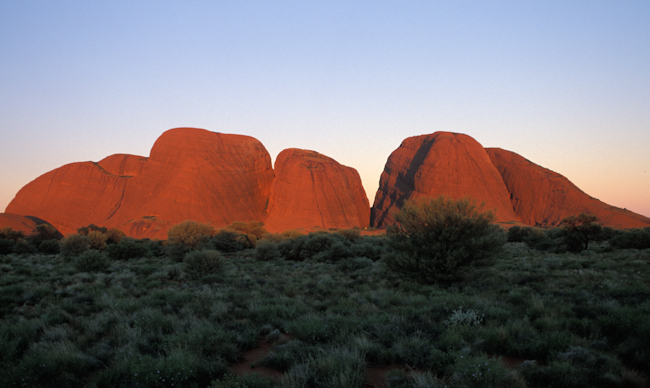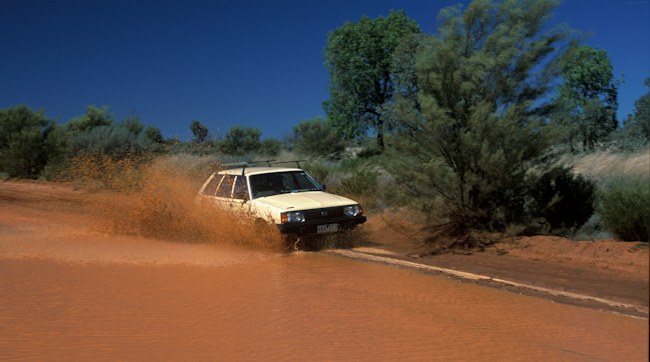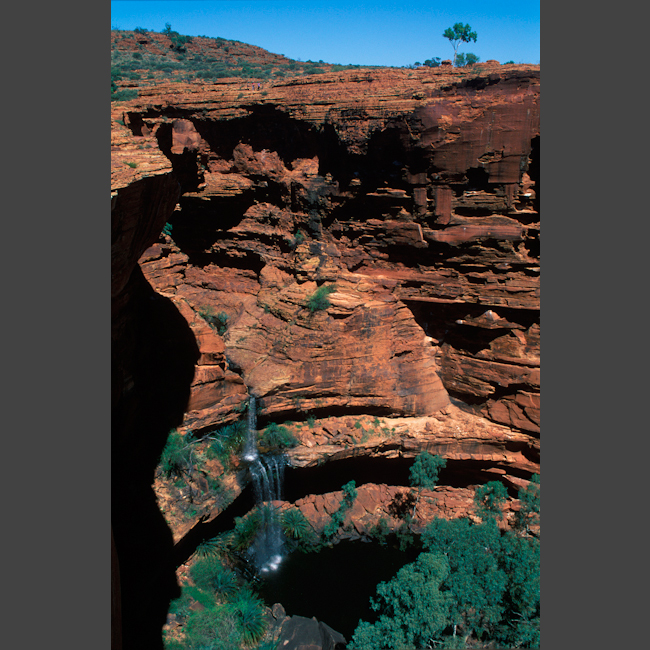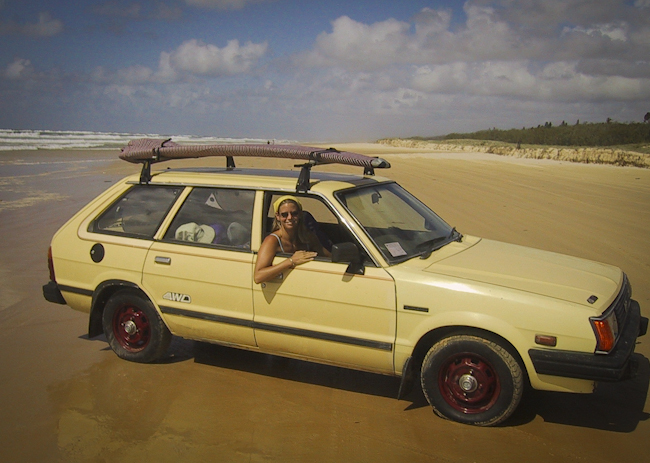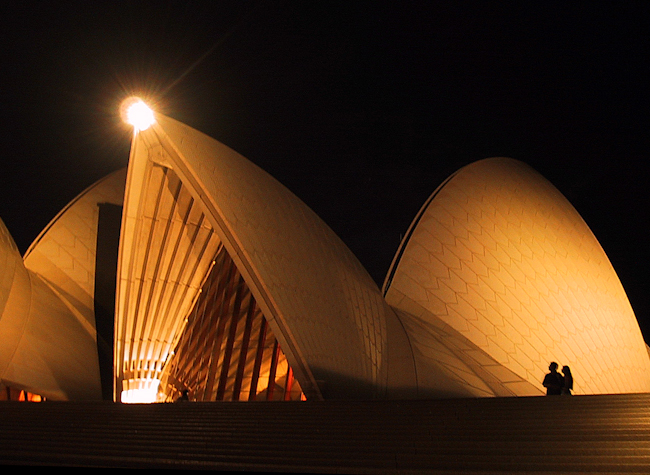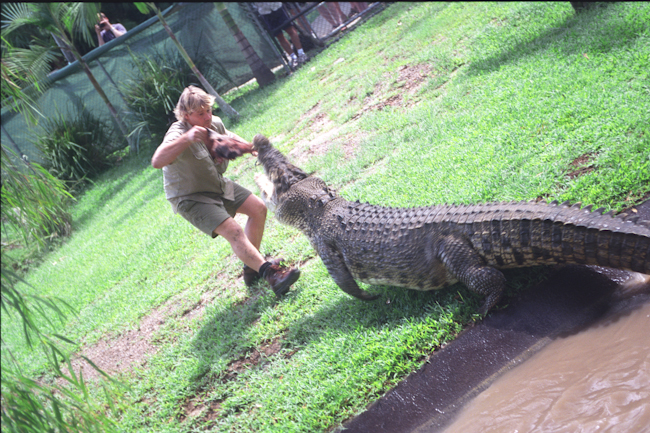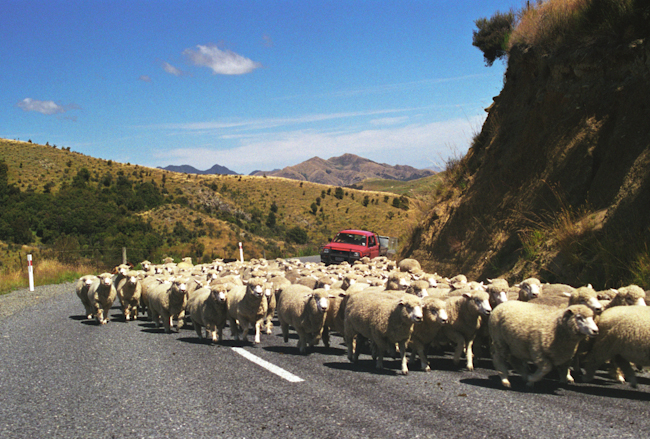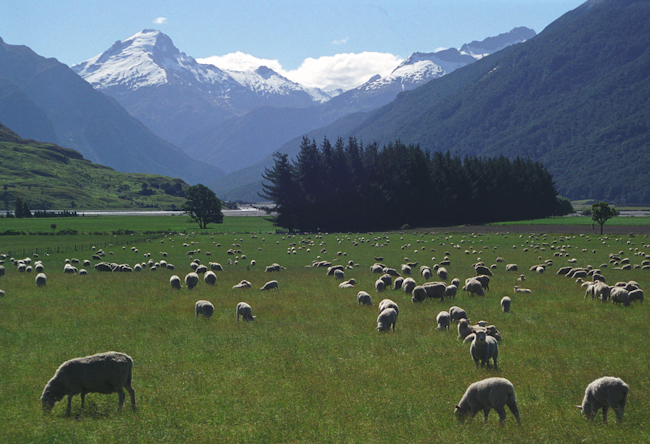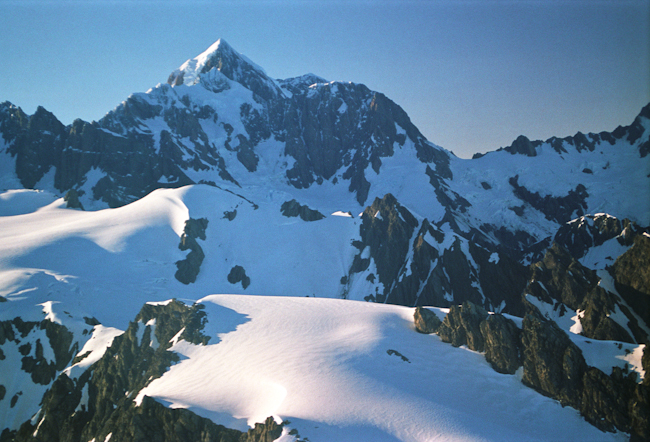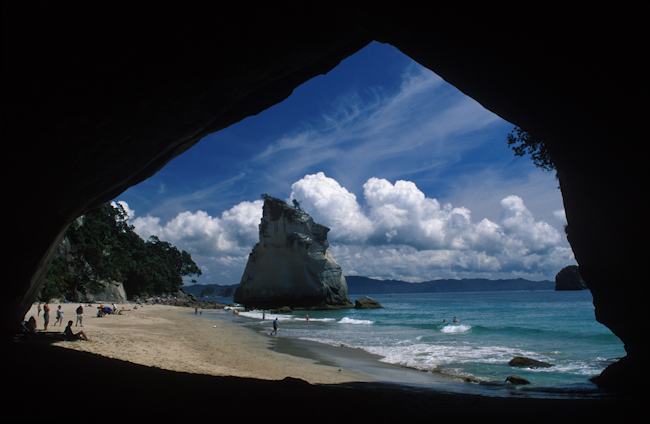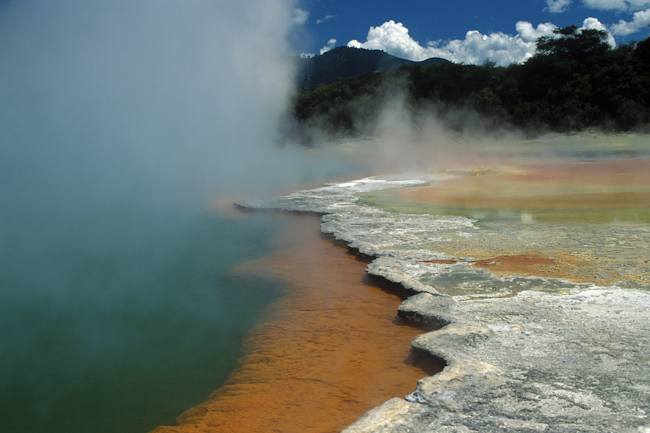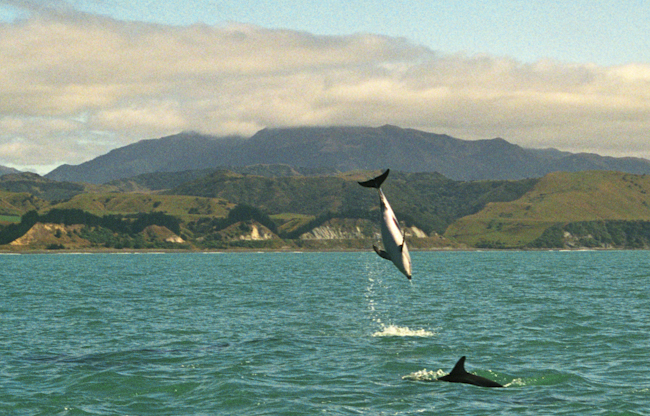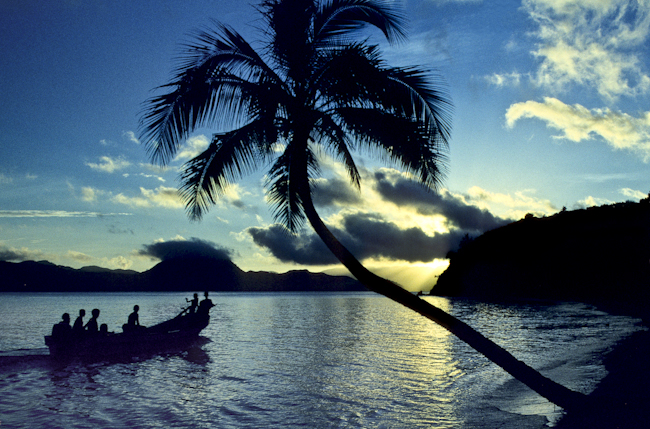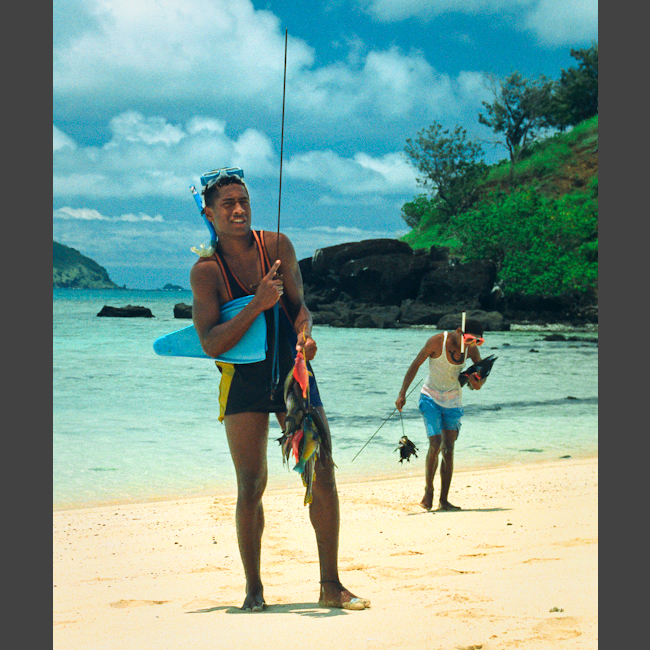“The weather started getting rough, the tiny ship was tossed. If it wasn’t for the courage of the fearless crew, Bojangles would be lost…”
Captain Dale yelled, “Hang on!” Our stomachs dropped as we plunged down the backside of the swell. Swallowed in its trough, we looked up at the next approaching wave that loomed above and threatened to broadside our sailboat. Our torn jib flapped helplessly in the wind while we struggled to make headway against the tide. The ocean, in this exposed passage, was even rougher than we had expected.
A year ago we took sailing lessons hoping for an opportunity to sail sometime during our journey. Our preparation wasn’t wasted – we arranged to charter a bareboat yacht together with another couple, Julie & Anthony, who also planned a Great Barrier Reef vacation. By splitting the costs between four people, preparing our own food, and mooring away from large resorts, we were able to afford seven days of skippering our own luxury 35-foot sailboat (costs averaged just US$44 per person per day but could have been much higher without negotiating a ‘special deal’).
The night before setting sail we all arrived in Airlie Beach, the launching point for our Whitsunday Island adventure. We stocked up at the grocery store with a week’s worth of provisions & after stowing our gear in our boat we were ready for the morning orientation at the Whitsunday Escape office. Vit, our laid back instructor, gave us the low down on places to sail and our boat, Bojangles. Then upon passing an open book test he graduated us from class – we were amazed that with our little combined experience the four of us were deemed competent sailors. Soon afterwards Vit guided Bojangles out of the harbor advising us to keep the motor running and mainsail reefed in for storm conditions. It was a daunting experience to begin sailing in choppy seas with winds gusting up to 25 knots. With Vit’s final words of encouragement, “Have fun!” we were on our own.
Once firmly anchored to overnight in Cid Harbor we relaxed with a glass of wine on and relaxed after our first big day of sailing. Vit had stressed the importance of anchoring well to keep the boat securely positioned against the dramatic tidal variations and gusty winds. We soon realized his concern was warranted when we noticed a nearby sailboat drift, dragging its anchor (fortunately the boats occupants took action in time to avoid a collision with another boat).
The next morning we awoke to a crisis – our boat had no coffee maker! Thinking quickly, Julie and Anthony solved the problem by boiling coffee grounds and straining them through a bandana. Savoring our morning brew we awaited the 8 a.m. radio weather forecast which was followed by a boat check-in. Using proper radio etiquette, we responded to our first call: “Bojangles, Bojangles, Bojangles, this is Whitsunday Escape. What are your intentions for the day? Over,” by answering “Whitsunday Escape, this is Bojangles. We plan on setting sail for Macona Inlet and anchoring for the night. Over.” With our plan approved we signed off and set about making breakfast.
A daily routine was easily established; coffee, radio check-in, a scrumptious breakfast, a late start for the next destination, a few hours of sailing, anchoring, then leisurely preparing the evening feast. Our most difficult decision of the day was which bottles of wine should accompany dinner. We rationed ourselves to two bottles per night of Australia’s finest wines collected during the group’s travels, and hoped we could survive on these ‘meager’ portions.
Captain Dale usually took the helm and the seasoned crew handled the sails. Our guards were down after enjoying several days of easy sailing when a sudden rainstorm surprised us. With limited visibility, strong winds, and driving rain, controlling Bojangles instantly turned into organized chaos. Then, as quickly as it began, the storm moved on leaving us heading 180 degrees off our original course. We made a mental note – take a compass heading for a clear course before it’s needed!
Casual sailors rarely visit the isolated Border Island and its tiny beautiful bay. In order to reach this coral fringed island boats must negotiate a narrow, swirly passage during an outgoing tide before crossing an unprotected rough channel. The weather had finally cleared enough for Whitsunday Escape to approve our visit, and everyone was excited to go ashore after the long trip. Dale chose to hop off the sailboat and paddle his surfboard 150 yards to shore. Julie, Anthony and I loaded the outboard-motored dinghy with camera gear and supplies (beach towels, snorkel gear, and beers) for a fun excursion.
From a unique vantage point onshore, Dale watched an interesting situation unfold:
“Having just paddled against the gusting wind and tiptoeing barefoot across the coral I stood, surprised they were attempting to get ashore. The shallow reef was virtually impassable at low tide, something I thought they had noticed. Opting to use oars to protect the reef (not a bad idea) they killed the motor and lifted it out of the water. Gusts of wind spun the dinghy as their unsuccessful rowing made no headway.
Laughing while watching the ‘Dinghy Three’ drifting, spinning, and struggling, I was relieved when it appeared the beach excursion had been aborted. Anthony put the motor back in the water and attempted to start it while Julie and Andrea continued to paddle. The wind was quickly pushing them away and I thought “throw out the anchor before you drift too far”. Apparently it was too late – they were already drifting out to sea.
I scrambled for my surfboard and started cautiously tip toeing out to the deeper water, hoping to paddle to the nearby yacht and organize a rescue. Fortunately the guys on the yacht had enjoyed watching the entire comical escapade and launched a dinghy to retrieve my fearless crew! Fifteen minutes later I reached the rescuers’ boat. There was a noisy party underway and I readied myself for the grief I expected to receive. Five simple words saved me…
‘Permission to come aboard, captain!’ By blind luck I had addressed the captain and over the roar of laughter from his drunken crew permission was granted. Andrea and Julie were obviously the ‘honored’ guests of the party – the male only crew acted as if they hadn’t seen women for months. Anthony, however, wasn’t being ignored. Our dinghy’s motor problem had mysteriously fixed itself and the good-natured Aussies poked fun at him from all directions. Six hours, twenty bottles of fine wine, and tons of gourmet food later we were back on Bojangles laughing about the good fortune of the ‘Dinghy Three’.”
The next morning we left Border Island unaware of the wild adventure we would encounter next. Bojangles was in need of repair – its jib had been torn on an improperly installed piece of rigging. After a brief discussion and 8 a.m. radio call the solution emerged: We were to sail to Hamilton Island for the needed repair.
Whitsunday Escape had OK’d us to sail through the Solway passage, hinting that it may be a little rough. Normally bareboat charters were discouraged from taking this route because of its strong currents, exposure to gusty winds, and large swells. But from our location it was the quickest route, so after a late start we sailed off. Whitecaps and large waves crashed on the rocks ahead indicating that we should prepare for a rough ride. “Hang on!” Dale yelled.
Our boat accelerated as we plunged into the wave’s trough and then stalled momentarily before climbing the next 10-foot plus swell. Water crashed over the bow as we attempted to maintain course. We needed more speed – our torn jib was useless so the entire mainsail needed to be raised. The boat dropped beneath our feet as we climbed up on deck and made our way forward to the bow in order to untie the reef lines around the mainsail. Anthony readied himself to raise the sail and Dale continued to navigate the boat while shouting out warnings as each large swell tossed the boat. The moment the mainsail lines were free, Dale yelled, “Raise the main!” Anthony cranked on the winch, and Julie returned to the relative safety of the cockpit.
The extra mainsail gave us the speed we needed to cross the channel and leave the rough Solway passage behind. Our last night, safely docked at Hamilton Island Resort, we once again faced our toughest decision…which wines should we have with dinner?
Overall during our 79 days in Australia we drove slightly over 10,000 miles. Even given the great distances we traveled, we still didn’t see everything we wanted to. So, another time we look forward to returning to Australia to visit Perth, the Bungle Bungles, Darwin, and to scuba dive on the outer Great Barrier Reef. Luckily, we sold our Subie for Aussie $2,000 (so the car only ended up costing us about U.S. $250 for parts we fixed and another U.S. $1,000 for fuel) to a nice Canadian couple who promised to take good care of Sunshine. We already miss the conveniences of driving and having somewhere to carry all our stuff. Australia is definitely a place we’ll come back to.
